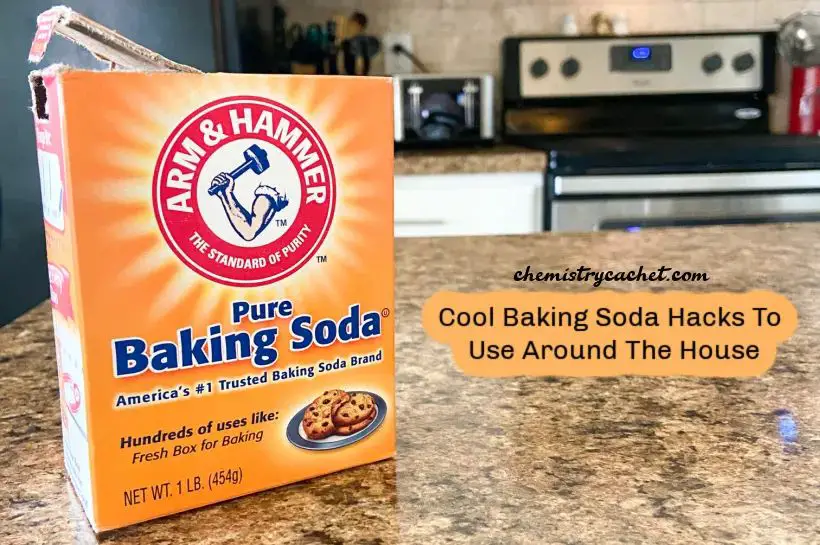Is Soda Ash And Baking Soda The Same Thing?
Define Soda Ash
Soda ash, also known as sodium carbonate (Na2CO3), is an alkali chemical refined from the mineral trona or naturally occurring sodium carbonate-bearing brines (aquifers). It is manufactured by the Solvay process which involves reacting sodium chloride (salt) with calcium carbonate (limestone) and ammonia. The chemical equation is:
2NaCl + CaCO3 + H2O + NH3 → Na2CO3 + CaCl2 +2NH4Cl
Common uses of soda ash include glass production, pulp and paper manufacturing, soaps and detergents, water treatment, metallic cleaning agents, and as an alkali in chemical preparations. It is also used as a food additive and baking soda.
Sources:
https://www.chemtradeasia.com/blog/soda-ash-light-facts
http://sodis-plc.com/blog/en/the-major-applications-of-sodium-carbonate-or-soda-ash/
Define Baking Soda

Baking soda, also known as sodium bicarbonate or bicarbonate of soda, is a chemical compound with the formula NaHCO3. Its chemical composition is sodium and bicarbonate ions. Baking soda is manufactured by the Solvay process, which uses salt, limestone, ammonia, carbon dioxide, and water to produce sodium bicarbonate along with calcium chloride as a by-product.
Baking soda is commonly used in cooking and baking as a leavening agent. When baking soda is combined with moisture and an acidic ingredient like yogurt, buttermilk, or vinegar, a chemical reaction occurs that produces carbon dioxide bubbles. These bubbles help expand batter and dough, causing baked goods to rise. Baking soda helps cakes, muffins, and quick breads rise while also affecting texture and crispness. It is often used together with baking powder to provide extra lift.
Some common uses of baking soda in cooking and baking include:
- Leavening agent in cakes, muffins, pancakes, and other baked goods
- Tenderizing agent in baked goods like biscuits and scones
- Neutralizing acid in recipes with ingredients like buttermilk or molasses
- Creating crispier baked good crusts and textures
- Reacting with vinegar or lemon juice in chemical leavening
Chemical Differences
The key chemical difference between soda ash and baking soda is in their chemical formulas. Soda ash is sodium carbonate, which has the chemical formula Na2CO3. Baking soda is sodium bicarbonate, which has the chemical formula NaHCO3.
Soda ash (sodium carbonate) is composed of sodium, carbon, and oxygen atoms. The sodium provides the sodium cation Na+, while the carbonate provides the anion CO32-.
Baking soda (sodium bicarbonate) also contains sodium cations (Na+) but has a different anion, the bicarbonate anion HCO3-. The bicarbonate anion contains an additional hydrogen atom compared to the carbonate anion in soda ash.
So in summary, soda ash is sodium carbonate (Na2CO3) while baking soda is sodium bicarbonate (NaHCO3). The key difference chemically is that baking soda contains an additional hydrogen atom.
Manufacturing Differences
Soda ash and baking soda have very different manufacturing processes. Soda ash is produced on an industrial scale through the Solvay process, which involves reacting sodium chloride (table salt) with ammonia and carbon dioxide to produce sodium carbonate along with ammonium chloride as a byproduct. The raw materials needed for soda ash production include brine, limestone, ammonia, and carbon dioxide.
Baking soda, on the other hand, is made through a much simpler process. It is manufactured by combining sodium carbonate and carbon dioxide under pressure to produce sodium bicarbonate, which is baking soda. The only raw materials required are soda ash and carbon dioxide gas. While baking soda can be made in a lab setting with basic equipment, soda ash production requires large specialized industrial facilities.
So in summary, soda ash relies on the complex Solvay process with multiple raw material inputs, while baking soda is made by a simple reaction between soda ash and CO2. The manufacture of soda ash happens on a massive industrial scale, whereas baking soda production is a much smaller operation.
Taste Differences
Soda ash has a distinctly bitter, alkaline taste due to its chemical composition. According to DifferenceBetween.com, “Soda ash has a cooling alkaline taste.” https://www.differencebetween.com/difference-between-soda-ash-and-vs-baking-soda/ In contrast, baking soda has a salty, slightly alkaline taste. Quora notes that baking soda has a “salty, alkaline taste.” https://www.quora.com/What-does-baking-soda-taste-like-Can-it-be-substituted-for-baking-powder-for-cooking-purposes While both have an alkaline taste due to their basic chemical properties, soda ash is distinctly more bitter, while baking soda has a milder salty flavor.
Uses
Soda ash has several key industrial applications and uses:
In manufacturing, soda ash is used to make glass, detergents, chemicals, and other materials. It helps lower the melting point in glass production and is an important component of many industrial processes (https://psiberg.com/soda-ash-vs-baking-soda/).
In water treatment, soda ash is used to control acidity levels and remove hardness and contaminants from water. It is added to neutralize acidic water sources (https://www.doubtnut.com/qna/630391075).
As a cleaning agent, soda ash can cut through grease, soften water, and disinfect surfaces. It is found in many powdered and liquid cleaners as it helps remove dirt and stains.
Baking soda also has several household and cooking uses:
In cooking, baking soda is used as a leavening agent to help batters and doughs rise. When heated, it produces carbon dioxide bubbles that make baked goods light and fluffy (https://www.doubtnut.com/qna/161347285).
As a cleaner, baking soda can deodorize, scrub, and polish around the house. Its mild abrasiveness makes it useful for cleaning sinks, countertops, and other surfaces.
Baking soda also has applications for personal hygiene and health. It can be used as toothpaste, shampoo, deodorant, and antacid. Its neutralizing abilities make it helpful for heartburn, indigestion, and other conditions.
Price Differences
Soda ash is more expensive as an industrial chemical, with wholesale prices ranging between $300-330 per ton according to Source The Right Wholesale baking soda ash price Online and Soda Ash List Pricing and Energy Surcharge Program. Baking soda is much less expensive in comparison, typically costing just a few dollars for a box or bag sufficient for household use.
The significant price difference stems from soda ash being produced and sold in mass quantities for large-scale industrial applications like glass making and chemical manufacturing. Baking soda’s inexpensive price point makes it accessible for consumers to use in cooking, cleaning, personal hygiene and minor medical needs.
Availability
Soda ash and baking soda differ significantly in their availability. Soda ash is primarily produced and sold in large quantities for industrial use. It is manufactured by chemical companies and supplied to industries like glassmaking, soaps and detergents, paper, and water treatment plants. Soda ash is not readily available to average consumers, as it is a bulk commodity chemical.
On the other hand, baking soda is easily accessible to consumers in small quantities, usually sold in boxes or bags in the baking aisle of grocery stores. While also used for some industrial applications, baking soda is commonly purchased by households for use in cooking, baking, cleaning, personal hygiene, and other household needs. Unlike soda ash, baking soda can be conveniently found at any local supermarket or convenience store.
Safety
Soda ash requires proper safety gear like gloves, goggles, and masks when handling since it can irritate eyes and skin on contact. Inhaling soda ash dust is also harmful and can cause respiratory irritation. One source says “Sodium carbonate dust is harmful if inhaled, according to the Iowa State University. It irritates the respiratory tract and can cause burning pain in the nose and throat, as well as labored breathing.” (https://www.livestrong.com/article/218440-what-are-the-dangers-of-sodium-carbonate/). Ingesting soda ash in large amounts can also cause health issues.
Baking soda is generally recognized as safe for consumption by the FDA. It is often used in cooking and baking and does not require safety gear to handle. One source mentions “Baking soda is generally recognized as safe for consumption by the U.S. Food and Drug Administration.” (https://www.healthline.com/nutrition/baking-soda-benefits-uses#TOC_TITLE_HDR_2). While ingesting large amounts of baking soda can cause side effects, it is considered safe when used properly.
## Summary
Soda ash and baking soda are differing compounds with some similarities but distinct differences. Their chemical makeup is not the same – soda ash is sodium carbonate while baking soda is sodium bicarbonate. Manufacturing processes and how they are produced also differ. Soda ash is mined and refined whereas baking soda is synthetically made in a laboratory. Taste-wise, soda ash has a soapy, alkaline taste while baking soda is salty but slightly bitter. As far as uses, soda ash has applications in glass-making, detergents, water treatment and as an additive for foods. Baking soda is used in baking, skin exfoliation, antacids and teeth whitening. Prices also vary, with soda ash generally cheaper than baking soda. Soda ash is widely used in industry while baking soda is more readily available for consumer purchase. Both are fairly safe with low toxicity at normal exposure levels.
In summary, while sharing some attributes, soda ash and baking soda are clearly different compounds manufactured and used for distinct purposes. Calling them the same would be incorrect – they have unique chemical structures, tastes, manufacturing methods and applications.

